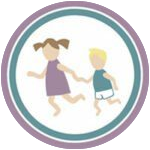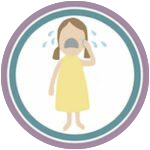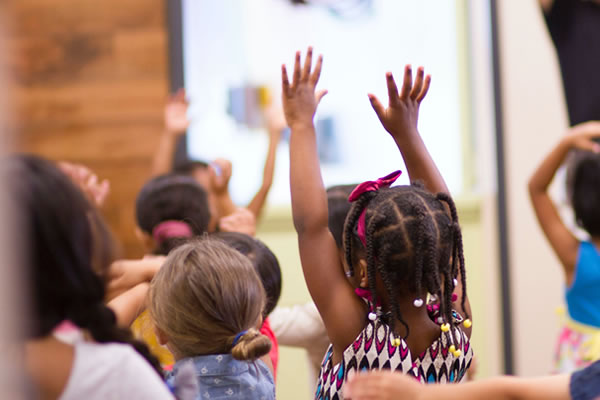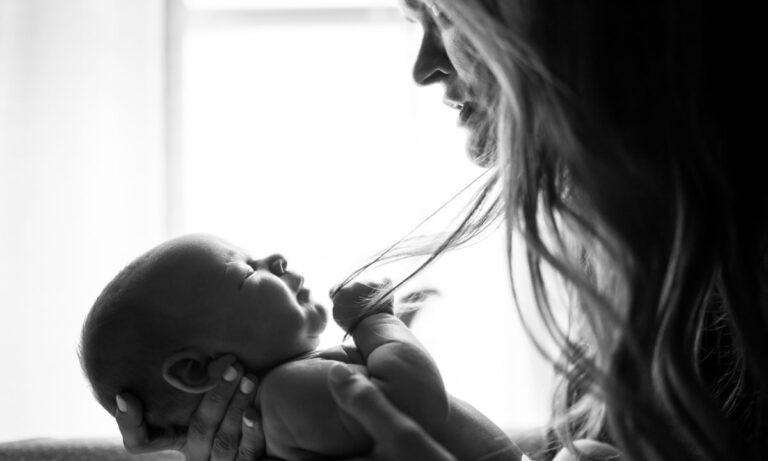When our neighboring Mount St. Helens started to rumble, one of my children asked, “Do people who live close by get mad when the volcano erupts?” “Do you get mad at the rain?” I asked. While he was pondering my question, his brother said, “Being mad at the rain or a mountain erupting is as insane as being mad at another person.” Indeed, we live at peace with nature because we have realized that it doesn’t change to fit our ideas. Yet, too often we expect humans to change according to our thoughts and children to develop according to our plan. Such expectations leave us frustrated and powerless.
How do I know it’s raining? I observe. I don’t try to change the rain; I respond by taking an umbrella. Likewise, how do I know what my child should be? I observe and respond without trying to manipulate.
“But,” protests a caring father, “How do we respond kindly when a child is hitting, grabbing, or making a mess?”
In the normal course of events, most of us are looking for a way to manipulate and “stop” what we define as “wrong.” Yet, if we stop to question our own assumptions, we discover that the child has a very valid reason for her actions or words, or that nothing is really wrong. Once we realize that our perception is not true, we can notice the child’s intention and offer help (if needed) rather than judgment.
The reason for a child’s behavior is often emotional and not always obviously related to what she does or says. Stopping her expression does not stop the cause. I can stop her screaming or hitting, but the reason for her anguish is still there and will erupt again. In fact, my stopping her will induce a sense of separation and fear compounding her anxiety and driving her into more aggression. In contrast, once I understand the child, I can respond kindly, regardless of whether she can have what she wants at the moment.
In my book, Raising Our Children, Raising Ourselves I offer a communication formula, SALVE, to help you find the way back to your wisdom and love:
S – Self-inquiry; Gaining freedom from the tyranny of unexamined thoughts.
A – Attention to the child
L – Listen
V – Validate
E – Empower
The following is an example from the book. It shows a father who was able to avoid his initial upset. His response would have normally been anger. But he used the SALVE formula to stay connected and kind.
“While Adi worked in the yard, his four-year-old daughter, Ruthi, went inside and poured herself a glass of milk. Some of the milk spilled on the table and the kitchen floor. When Adi came into the house and saw the spilled milk, he was ready to burst out with, “Why didn’t you ask me to help you? You know you can’t do this by yourself.” Instead, he took a deep breath; he noticed these words pass by silently in his head (S of S.A.L.V.E.) and took time to notice that they were not true or useful to him. He then turned his attention (A) to Ruthi. He noticed that she had been trying not to disrupt his work and was pouring herself a glass of milk without his help. He came closer and said cheerfully, “I see you had some milk all by yourself.”
Ruthi responded, “Yes, and some of it spilled.” She looked up at her father with a questioning heart while he (L) listened with a kind and open heart.
“That happened to me the other day at Grandpa’s,” he said (V for Validating). “I spilled juice. I felt clumsy but Grandpa smiled and gave me a towel. It’s easy to clean up.”
Ruthi ran from the kitchen and brought a towel (E, she feels Empowered), which she handed to her father. It was not the kind of towel Adi would have used to clean up the floor, yet he accepted the towel with gratitude.
The S of SALVE is the most powerful and sometimes challenging part because it asks you to deviate from a lifelong habit of obeying your thoughts. In this article, I will only focus on the S — Self-inquiry. The rest of it becomes crystal clear once you inquire into your own thoughts, and, you can read about the entire process in the book.
We fool ourselves to believe that our upset is caused by the child. But is it? Notice how you feel when you believe your own thoughts; angry, upset, wanting to scold, threaten, punish or withdraw. Would you be upset if you didn’t have the thought that goes against the child? Without the thought, the upset is replaced with peace.
“She should listen to me.” Really? Why? Who dictates so? How can you know that? Observe: Is she listening? If she isn’t, wouldn’t it be more useful to find out why, so you can understand her and stay connected? Notice her as you notice the rain; she is not listening. There must be a good reason why she is not able to listen. If, instead, you listen to her (understand her behavior), you will discover why she cannot hear you. (Some possibilities are: She is too young, she needs physical communication, she is scared, confused, insecure, disconnected, she is needing something that you don’t see, etc.)
Our purpose is not to stop the child’s expression (unless unsafe), but to understand why he must be doing what he is doing, so we can care for him. Often we discover that where we see a problem where there is none. Even if the action has to be stopped, once we understand the need or cause, we can feel calmer and respond kindly. I invite you to assume that everything the child is doing is perfectly right. Such realization will wake you up from your confusing thoughts so you can respond rather than manipulate them.
The Power of “Yes”
One way to quickly bring clarity to yourself is by saying “yes” when you want to say “no” (when safe.) Once you are “boxed” in your positive response, look for a way to fit with the “yes.” Your child is painting on the wall. “Yes, I can see how you would love to cover the wall with colors,” and you cover the wall with paper or offer an easel. Or, “Yes, I see that you love to make your sister scream,” and if the little sister is not enjoying herself (she might), you can offer some other game that gives the child a sense of power. (See more on Power Games, in the book Raising Our Children, Raising Ourselves.) “Yes, I see that you like to tear books,” as you offer old magazines for her to shred.
The “yes” is a way to turn around your opposing reaction into cooperation with your child. “I see what she needs. How can I assist her?” This will open your mind to peaceful solutions. If my child needs to bug her sister, I look for the reason and offer validation, listening, and caring solutions.
One mother told me how she used this approach when her four-year-old was sitting on the window sill of their fourth-floor apartment. She was ready to scream “no” and scold “how many times did I tell you…” Instead, she said, “Yes” and promptly knew how to go on validating his intent; “I see how much you love to look down from the window. Here is a stool you can use safely.” She brought it to the window and moved the child over. The boy said, “But mom, I was safe on the window too.” “I know,” mom responded, “but I was scared.” She spoke honestly about her needs and the boy was therefore happy to use the stool. She told me he has kept using it ever since.
No Need to Fix the Child
Can we respond to the child, rather than try to change her? The other day I gave one of my children a milkshake and he swung his arm when I handed it to him. The thick drink splattered on the floor, the counter, and our clothes. “Wow, this is funny,” said his brother and we burst out laughing. The thought, “It shouldn’t have spilled” would have been a painful thought. It didn’t cross any of our minds so we stayed joyful and connected. The next thing to do was to clean the floor and clothes. I like knowing what to do next. It makes my life simple. We can clean the floor in anger or in happiness; the same floor. Will he or I be less careful next time because I wasn’t angry? Do you believe this thought? Did humans stop spilling things yet? Does being upset ever make us more capable?
The good news is: You don’t have to obey your painful thoughts. When thoughts bring you joy and a loving connection — go with them. If you notice stress and disconnection — check the validity of your thoughts. Don’t believe everything your mind says. If it hurts, it isn’t true.
Parents often ask “What if my child is truly misbehaving?” I don’t know what “misbehaving” means because to me a child is always doing the best she can to meet her own need. When you explore your thought about what you call “misbehaving” you may be surprised to find that it has nothing to do with your child; she has a valid and good reason to act or speak the way she does. Once you understand the reason, your confusion will be over and you will be able to either eliminate the cause of the difficulty or respond respectfully and peacefully.
A few years ago, I was teaching the SALVE formula and the “yes” approach in one of my workshops and a couple of days later I received an email from a participant who found my guidance very similar to The Work of Byron Katie and to ideas from Vedanta, Taoism, Zen, and other ancient teachings. I then ordered the book Loving What Is and found that the Self-inquiry and the “Yes” are similar to the four questions and the turnaround in Loving What Is.
The Work crystalized and deepened the self-inquiry I offered and so I started incorporating it into my work with parents.
The four questions and turnaround as offered in the book Loving What Is are:
1. Is it true?
2. Can you absolutely know that it’s true?
3. How do you react when you think/believe that thought?
4. Who would you be without the thought?
After answering these simple questions, turn the sentence around:
To the opposite (“he shouldn’t listen,” and find out why).
To yourself (“I should listen to me” and notice how that would clarify things.)
To the other (“I should listen to him” and discover how it could benefit you).
The following is an example of a mother’s investigating her own thoughts about her child’s behavior, with the four questions and turnaround: Yael: “We came home after a wonderful day in the park and Toby was swinging a plastic rod while running through the house. I was afraid for the toddler. I told him to stop. He didn’t. I told him if he doesn’t stop I will take the rod away. He didn’t stop. I took it away. He kicked me. I told him if he kicks, no bedtime story. He kicked more.”
Naomi: Toby shouldn’t have kicked, is that true?
Y: Yes.
N: Can you absolutely know that it’s true?
Y: No. He was frustrated. I did respond kindly first and said, “I know you had a lovely day and now I need time to myself…” But nothing helped.
N: Well, I understand, and the “nice day” story was not his experience at that moment.
Y: Oh, I see. His day, at that moment, wasn’t so nice. He wanted a story, and to swing the rod around, and I took both away from him.
N: Yes. So now you understand your child. If we don’t judge and decide how the child should be, we can understand how he is. How do you react when you believe that he shouldn’t kick and he does?
Y: I get angry, impatient… and I yell and threaten.
N: Who would you be without this thought that Toby shouldn’t kick when he does?
Y: Calmer. I would help him.
N: Yes. So turn it around.
Y: Toby should have kicked. (Thinking). You know, he wanted to go outside where it would have been safe but I didn’t let him. He didn’t have much choice.
N: So you understand him?
Y: Yes.
N: Turn it to yourself.
Y: I shouldn’t have kicked me.
N: Tell me about it.
Y: I was kicking myself with anger inside my head, thinking I am a bad mother.
N: All the while doing the best you can with what you knew at the moment.
Y: Yes.
N: Can you see another turnaround?
Y: I shouldn’t have kicked Toby.
N: Is it as true or truer?
Y: Yes. I was angry with him and insulted, and I took away his story time.
N: If things don’t go our way, we kick in an “adult” way and the children mirror us. I call it the parent’s tantrum.
Y: OK, I see now. So without my story, neither one of us would need to kick.
N: You can only know about you. I hear from you that you will not “kick” without believing your thought. Instead, without thought, you see your child’s need and find a kind solution.
Y: But, Naomi, isn’t it a natural consequence for his kicking to not read the story?
N: Notice how the mind wants to defend its position and question that. If it was natural, it would happen on its own. I notice that nature does not need my management. His kicking was over and nothing happened.
Y: Oh, I see, I see. Not reading to him is not really related to kicking.
N: Not reading the book is you kicking him.
Y: You are right. When I listen to him and help, he doesn’t kick. He is learning from me to punish because that is what I was doing. So if respond to his need, he won’t kick.
N: Likely. And, I cannot know that. Let me know how it works. Expecting a specific result is yet another story that gets in the way of clarity and unconditional love. It is being in his business. Work on you so you can love him unconditionally.
Y: In times that I respond to him with kindness and understanding he doesn’t kick.
N: So he is your mirror.
Y: This is so freeing. Thank you.
This story leads most parents to the common worry; “How will he ever learn?” “Shouldn’t he learn not to kick, whether or not mom is doing the kind thing?” But observation tells me that he hasn’t so far, and mom is working on her own learning not to kick.
The idea that learning has to be forced in advance has not been questioned. Yet, in reality, everything flows in perfect time. Without advanced breathing lessons, the baby is born and breathes. Without walking manuals, she walks, and without talking classes, she talks. These miracles are the lessons of life and of the way children grow all the way through. We only need to water the flower, not force its petals open. Each child grows in her unique way. How do I know how that is? I observe. I respond rather than trying to shape. Notice how your respond to the rain and learn from the peaceful you. Marvel at the miracle your child is and respond as you would to the rain. Passively? No. With clarity and love? Yes.
©Copyright Naomi Aldort










